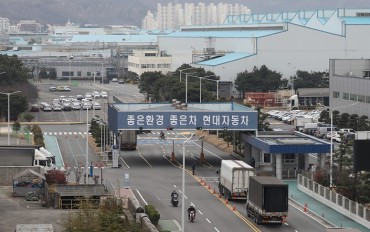
South Korean small and medium-sized companies have a harder time borrowing from lenders than companies in other Organization for Economic Cooperation and Development (OECD) economies, official data showed Saturday. (Image: Yonhap)
SEOUL, Feb. 26 (Korea Bizwire) — South Korean small and medium-sized companies have a harder time borrowing from lenders than companies in other Organization for Economic Cooperation and Development (OECD) economies, official data showed Saturday.
According to the Paris-based economic organization and the National Assembly Budget Office (NABO), the loan request rejection rate stood at 40.9 percent for local firms in 2015, which is 3.7 times higher than the OECD average of 11 percent.
By country, Finland, Austria, Belgium, Canada and France had rejection rates in single digits, with only 3 percent of requests for funds being turned down by Finnish lenders.
The latest findings showed that from 2007 to 2015, the rejection rate for local small and medium enterprises (SMEs) reached 43.4 percent, again much higher than the OECD average of 12.1 percent.
In addition to having a higher borrowing threshold, South Korean banks charged more for the loans they did offer companies.
The latest data showed that in 2015, lenders’ rates for loans taken out by small businesses stood at 3.9 percent annually, 0.2 percentage point higher than the OECD’s 3.7 percent average.
NABO said that from 2007 through 2015 South Korea’s lending rate was generally 0.2-1.6 percent higher than for the rest of the OECD.
It said following the global financial crisis, the average lender’s rate for the world’s developed, high-income market economies fell 1.7 percentage points, while South Korea’s rate dipped 1.4 percentage points.
The higher cost is meaningful because unlike bigger companies that can issue stocks and corporate bonds, smaller firms rely heavily on loans to finance their operations.
“If it is harder to borrow money and companies have to pay more on interest they are more likely to face problems,” a market watcher said. He said to overcome such deficiencies, local financial institutions must be willing to hand out loans based on technology, capable management and growth potential.
Lenders, however, said they are reluctant to give loans because of high risk of defaults. They added that even if they extend loans, the interest rates have to be higher to compensate for the uncertainties involved.
(Yonhap)






